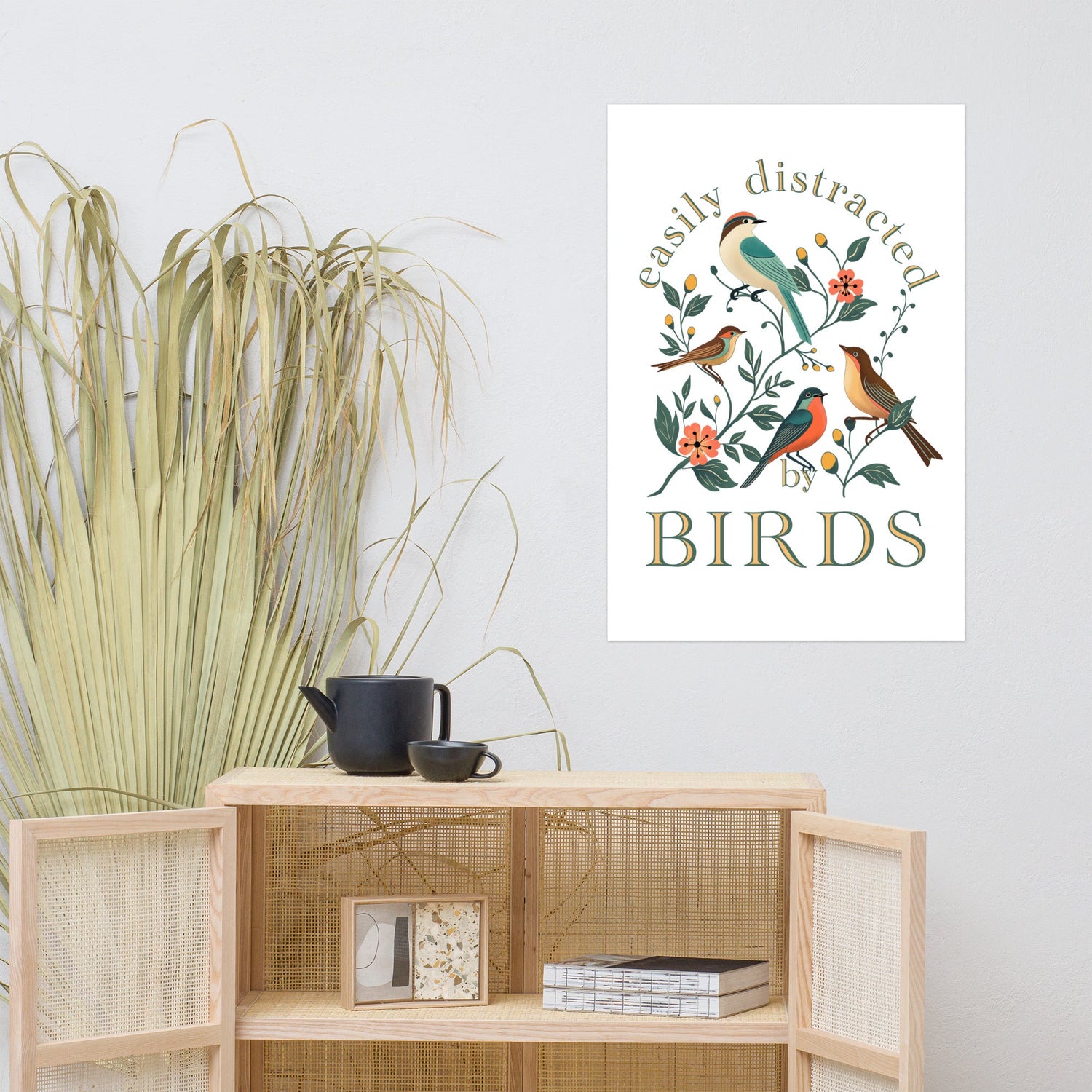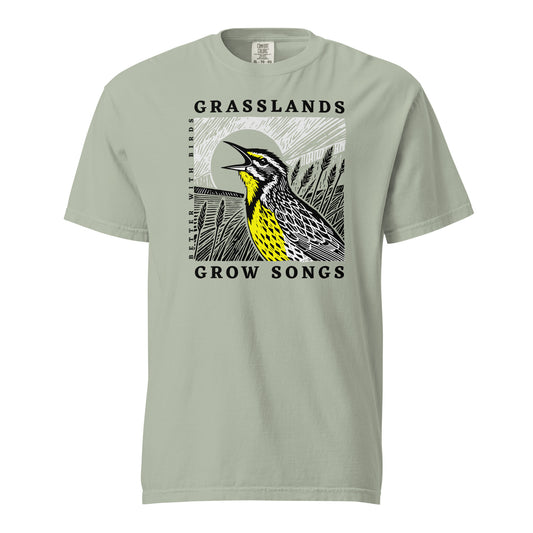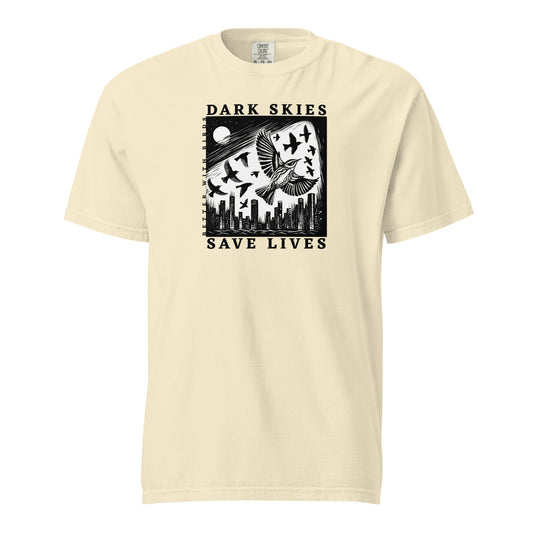Why Birdwatching + Bullet Journaling Is a Match Made in Heaven
Feature photo: mpfotoproducto / Shutterstock
Read Time: 8 minutes
Backyard Birding , Journaling , Mind & Body

This post contains affiliate links. If you use these links to buy something, we may earn a commission at no additional cost to you. We only recommend products we fully support or use ourselves. Our full disclaimer
PIN THIS FOR LATER

Contents
If you’ve ever found yourself halfway through a birding walk thinking, I wish I could remember exactly when and where I saw that yellow-rumped warbler last year, or if you’re the type of person who loves making lists about lists—welcome. You’re among friends. And you might be ready to combine two incredibly satisfying obsessions:
birdwatching and bullet journaling.
These two hobbies might seem unrelated at first, but once you start blending them, it becomes pretty obvious they’re soulmates. One gets you outside, noticing tiny feathered miracles. The other helps you track those moments, process them, and yes—maybe color-code them, too.
The bullet journal method not only organizes your birdwatching experiences but also fosters a deeper connection to your observations and goals. Combining birdwatching and bullet journaling is a great idea for making both hobbies that much more engaging and personalized.
Let’s break down why this combo is everything your nerdy, bird-loving heart has been waiting for.
So… What IS Bullet Journaling?
Bullet journaling (or “BuJo,” if you want to sound like a real notebook nerd) is a flexible, customizable method for organizing your life, tracking habits, setting goals, and capturing observations—all in a single notebook. Think of it as a planner, diary, list-maker, and sketchbook mashed into one.
It was created by Ryder Carroll, who described it as a way to “track the past, organize the present, and plan for the future.” It uses a simple system of bullets, logs, and collections to capture everything from to-do lists to gratitude logs. There’s no right or wrong way to do it—just a blank page and whatever you decide to put on it.
Most bullet journalers use dot grid paper—a subtle grid of tiny dots that gives you structure without making your page feel like graph paper. It’s the perfect layout for customizing your own charts, layouts, logs, or doodles—especially for nature lovers tracking changing patterns and sightings.
(Ahem—like our very own bird-themed spiral-bound journals, which come with the same beloved dot grid paper and extra-thick pages made for inky pens, colored pencils, and coffee-ring stains.)
We give 20% of all shop profits to bird conservation & inclusive birding efforts.
Setting Up the Bullet Journal
Setting up a bullet journal for birdwatching doesn’t require a trip to the art supply store or a calligraphy degree. You just need a blank journal (preferably dot grid, trust us), a good pen, and maybe a pencil if you like to keep your options open. Start with an index page—a DIY table of contents so you’re not flipping around like a confused warbler trying to remember where you logged that wood thrush.
Then add a future log, which is just a fancy way of saying “bird stuff I’m excited about that hasn’t happened yet.” Think: migration dates, bird festivals, big day counts, that trip you keep promising yourself to Cape May. After that, create a monthly log—a one-page spread to track sightings, feeder drama, and personal goals (like finally learning to tell the vireos apart).
Want to get even more detailed? Add a daily log to record what you saw, when and where you saw it, the weather, and whether or not you brought snacks (important). And here’s the deal: your bullet journal doesn’t need to be perfect, pretty, or Pinterest-worthy. It just needs to work for you. So make it messy. Make it minimalist. Make it full of stickers. Just make it yours.
Organizing Daily Tasks and Lists
If you’re using your bullet journal to keep birdwatching part of your regular rhythm, a well-organized daily or weekly layout can be a game-changer. Think of it as your home base for everything from birding plans to life admin—because yes, you can track your sightings and remember to clean your binoculars.
A monthly calendar is great for mapping out upcoming trips, migration peaks, or local bird walks, while a simple task list keeps you on top of the little things (like restocking suet or finally logging that pileated woodpecker sighting). A dot grid notebook gives you the structure to lay things out cleanly, with plenty of flexibility to adjust as your routines shift.
Want to add a bit of visual flair? Use washi tape, colored pens, or even tiny stamps to mark seasonal highlights or make different sections pop. The goal isn’t perfection—it’s keeping your days organized so you can spend more time watching birds and less time wondering where you put your field guide.
Why Birdwatchers Are Secretly Built for Bullet Journaling
You already notice small things: the way a nuthatch shuffles down a tree, how chickadees arrive like clockwork at 8 a.m., the sound of spring peepers mixed with red-winged blackbird calls. You might already be jotting sightings in the margins of a field guide or tracking first arrivals in your notes app.
Bullet journaling takes all that scattered brilliance and gives it a cozy home. This bullet journal thing emphasizes the importance of the Index page and the Future Log, creating an organized and flexible system for recording tasks, events, and reflections.
And unlike a standard field notebook, a bullet journal gives you total creative control. You can track whatever you want, however you want—and actually enjoy the process.
We give 20% of all shop profits to bird conservation & inclusive birding efforts.
Bullet Journal Spread Ideas for Birders
Here are some practical and creative ideas to bring your BuJo + birding life together:
🐦 Bird Log Pages
- Date / Time / Location
- Species Seen
- Weather & Light Conditions
- Behavior Notes (singing, feeding, nesting, chasing squirrels, being an absolute drama queen)
- Sketch or Sticker Spot
PRO TIP: Using page numbers can help keep track of different bird log entries efficiently.
📅 Seasonal Tracker
- First-of-year sightings
- Migrant arrivals/departures
- Blooming/fruiting plants birds are using
- Nesting behavior logs
PRO TIP: Give yourself a couple of weeks to adapt to this seasonal tracking system, so that you can settle into the routine and figure out your needs better. Don't worry if you need to change up your system before settling on the perfect one for you.
🗺️ Backyard Tracker
- Map of your yard and feeder locations
- Daily/weekly visitor logs
- Notes on feeder changes or food types
- Squirrel interference scale: 🐿️ – 🐿️🐿️🐿️🐿️
- Use color coding to differentiate between various elements in your backyard tracker.
🌎 Travel Birding Log
- State or province checklists
- “Bucket List Birds” page
- Highlights from birding vacations
- Packing list for your birdy getaways
PRO TIP: Back to page numbers... Using corresponding page numbers can help link related entries in your travel birding log. It could get confusing searching for different types of entries as your journal grows and this strategy is super helpful. More on this in a moment.
🎨 Fun Extras
- Bird of the Month feature
- Favorite feathers & facts
- Monthly bird-themed quote or poem
- Stickers, stamps, and little field doodles (no art degree required)
Migration and Threading in the Bullet Journal
Two handy techniques in the bullet journaling world—migration and threading—can make a big difference in how you keep your birding life organized.
Migration is just a fancy way of saying, “Hey, I didn’t get to this yet, but it’s still important.” Instead of letting forgotten plans get buried, you move them forward. So, if you planned to visit that new wetland this week but got rained out (or just didn’t feel like leaving the house), you can bump that entry to next week or next month. It keeps your journal—and your intentions—active and adaptable.
Threading, meanwhile, helps you link related pages together. Think of it like creating your own little breadcrumb trail. Let’s say you have a deep-dive entry on a birding trip in your daily log, but you also mentioned it in your monthly overview. With threading, you simply jot a page number on each entry so you can flip back and forth without the dreaded “where did I write that?” hunt.
Use these tools to keep your bullet journal fluid, flexible, and easy to navigate. You’ll spend less time flipping through pages and more time focused on your actual birdwatching goals—like finding that elusive wood thrush or finally making time for your big spring migration trip.
Why This Combo Feeds Your Brain and Your Soul
Bullet journaling and birdwatching are both about slowing down. They’re about observing and reflecting—noticing what’s there instead of rushing past it.
Taking a few minutes after a walk to log what you saw (or felt) turns your hobby into a practice. Over time, you’re not just tracking birds—you’re documenting joy. That kind of ritual is good for your memory, your creativity, and your mental health.
The journaling method offers flexibility and customization options, so you can experiment with different types of notebooks and supplies. This way, you can find what works best for your journaling practice without making huge investments in "special" gear. Plus, it just feels really good to flip back through the pages of a journal and remember the exact day you saw your first snowy owl, or when the pine warblers returned to your yard after a long winter. It’s a personal history book of wonder.
Your Brain Will Thank You
Birdwatching already sharpens your powers of observation, but bullet journaling supercharges that ability. Keeping a journal where you jot down what you see, when, and where doesn't just help you remember—it helps you learn.
You’ll start to notice patterns you might have missed:
- Which birds show up after a storm
- What time your feeder gets busiest
- When the first hummingbird of spring arrives like a tiny, furious jewel
Add a few symbols or a chart in your bullet journal, and suddenly you’ve got a personalized data system that makes you feel like a scientist. A well-dressed, casually caffeinated scientist in the field.
It’s the Most Satisfying Way to Track Sightings
Sure, there are apps for tracking bird sightings (and we love a good app). But there’s something deliciously analog about writing it down by hand. Bullet journaling lets you track not just what you saw, but also how you felt seeing it.
Try spreads like:
- “First of Season” Tracker
- “Top 10 Life Birds” list
- Monthly Feeder Visitor Logs
- “Birds Seen on Vacation” map
You can even create mini field notes for standout encounters: the barred owl that stared you down on your lunch break or the chickadee that practically posed for your camera.
It Makes Birdwatching a Creative Ritual
Bullet journaling adds a creative element to birdwatching that goes beyond just ticking boxes. Whether you’re a full-on watercolor wizard or someone who occasionally doodles a crooked beak in the margins, this is a way to merge science and art.
Your birding bullet journal can include:
- Doodles or watercolor sketches of species
- Collages with feathers, leaves, or photos
- Washi tape + bird stamps (don’t pretend you don’t have them)
- Themed headers for different habitats or months
Your notebook doesn’t have to be perfect. It just has to feel like yours.
It Travels With You (and Makes the Best Souvenir)
Heading out on a birding trip? Your bullet journal is your best travel buddy. It’s lighter than a laptop, less distracting than your phone, and way more personal than anything you’ll buy in the gift shop.
Use it to:
- Plan your routes and birding hotspots
- Note species you hope to see
- Track sightings each day
- Collect small mementos (tickets, stamps, pressed plants)
By the time you return home, you’ll have a memory-filled spread that’s part field guide, part scrapbook, part nerdy trophy case.
It’s a Mindful, Slow-Down Practice
Birding already invites you to slow down and be present. Bullet journaling extends that same energy—reminding you to reflect on what you noticed, not just record it.
Use a few journal pages to write:
- A short reflection on your favorite moment of the week
- A gratitude list of birdy things (e.g., “That heron’s ridiculous legs”)
- One sensory detail from your outing (the sound of nuthatches, the smell of wet leaves, the crunch of trail gravel)
You might be surprised how much joy shows up on the page when you’re not just chasing checkmarks but capturing the experience itself.
We give 20% of all shop profits to bird conservation & inclusive birding efforts.
Want to Try It?
If you’re curious about getting started, you don’t need to invest in an expensive planner or join a cult of washi tape (though, fair warning, washi tape will happen eventually).
All you need is:
- A good dot grid journal (like our spiral-bound journal designs with thick, pen-friendly dot grid paper)
- A pen you love using
- A few colored pencils or markers (optional, but fun)
- A comfy chair near a window or feeder
Whether you’re minimalist or artsy, detailed or chaotic, your journal can match your birding style. Our notebooks are built to handle field notes, hot coffee spills, muddy fingers, and the occasional drawing of a confused-looking woodpecker.










